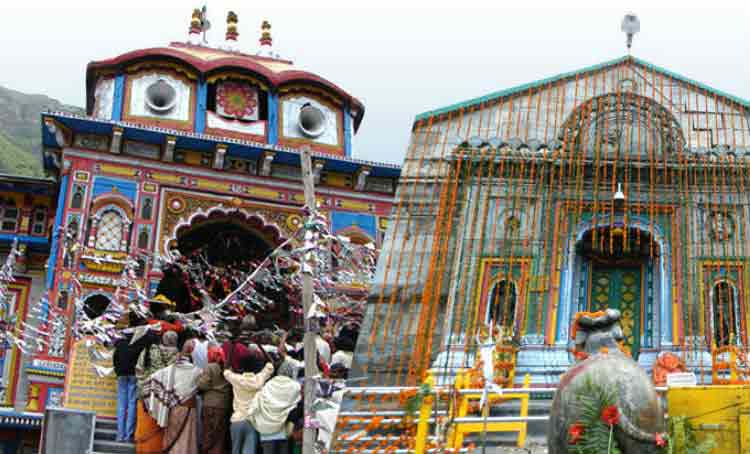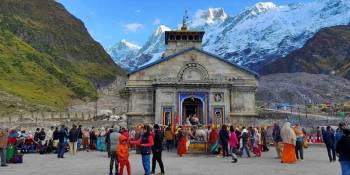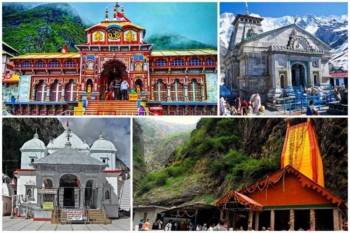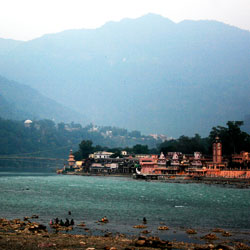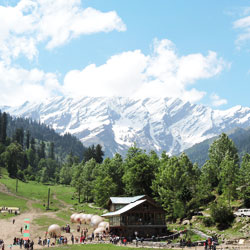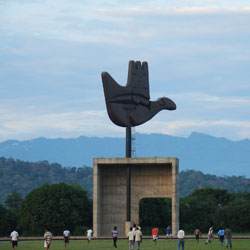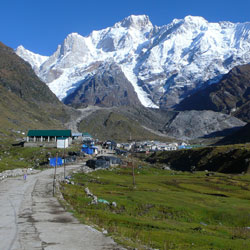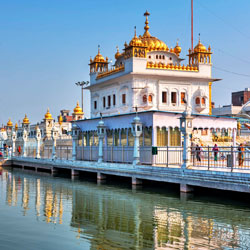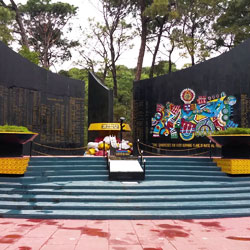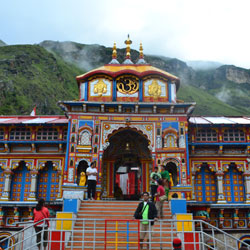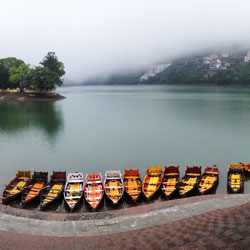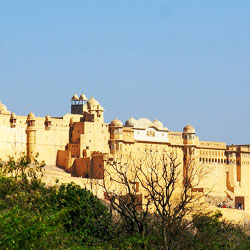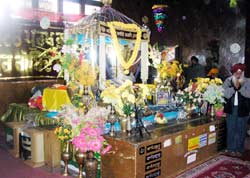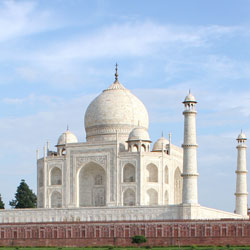- Thanesar, Kurukshetra, Haryana
- View Mobile Number
Do Dham Tour Package
Duration : 4 Nights / 5 Days
Destination Covered : Kedarnath, Badrinath, Joshimath, Rudraprayag, Guptakashi, Badrinath Temple
Tour Activities : Trekking, Sightseeing
Tour Themes : Religious & Pilgrimage
Price on Request
Kedarnath, Badrinath and Joshimath Tour Itinerary
Day 1
Pickup From Dehradun Airport / Haridwar Railway Station and drive to Guptkashi. During a journey some sightseeing are as below
Main Attractions :- Devprayag, Rudraprayag and Ardh Nireshwar
Main Attractions :- Devprayag, Rudraprayag and Ardh Nireshwar
Day 2
Early Morning, Drive to Gaurikund/Sonprayag, Trek start from Gaurikund to Kedarnath (3584 mts) by Pony / Doli. Tour members should carry personal medicines, heavy woolen, toiletries and clothes.
Note: - Driver will drop you Sonprayag or Helipad according to your preference. Also, we have not organized a Stay in Kedarnath ji if you wanted to stay upsite then guest have inform us during the booking.
Main Attractions
Kedarnath: - The Kedarnath shrine, one of the 12 Jyotirlingas of Lord Shiva, is a scenic spot situated, against the backdrop of the majestic Kedarnath range. Kedar is another name of Lord Shiva, the protector and the destroyer. According to legend, the Pandavas after having won over the Kaurava in the Kurukshetra war, felt guilty of having killed their own brothers and sought the blessings of Lord Shiva for redemption. He eluded them repeatedly and while fleeing took refuge at Kedarnath in the form of a bull. On being followed he dived into the ground, leaving his hump on the surface. The remaining portions of Lord Shiva appeared at four other places and are worshipped there as his manifestations. The arms appeared at Tungnath, the face at Rudranath, the belly at Madhmaheshwar and his locks (hair) with head at Kalpeshwar. Kedarnath and the four above-mentioned shrines are treated as PanchKedar.
Note: - Driver will drop you Sonprayag or Helipad according to your preference. Also, we have not organized a Stay in Kedarnath ji if you wanted to stay upsite then guest have inform us during the booking.
Main Attractions
Kedarnath: - The Kedarnath shrine, one of the 12 Jyotirlingas of Lord Shiva, is a scenic spot situated, against the backdrop of the majestic Kedarnath range. Kedar is another name of Lord Shiva, the protector and the destroyer. According to legend, the Pandavas after having won over the Kaurava in the Kurukshetra war, felt guilty of having killed their own brothers and sought the blessings of Lord Shiva for redemption. He eluded them repeatedly and while fleeing took refuge at Kedarnath in the form of a bull. On being followed he dived into the ground, leaving his hump on the surface. The remaining portions of Lord Shiva appeared at four other places and are worshipped there as his manifestations. The arms appeared at Tungnath, the face at Rudranath, the belly at Madhmaheshwar and his locks (hair) with head at Kalpeshwar. Kedarnath and the four above-mentioned shrines are treated as PanchKedar.
Day 3
Morning, Either Step back from Kedarnath ji or drive from Guptkashi to Joshimath.
Main Attractions :- Chopta, Ukkimath & Nar Singh Temple
Main Attractions :- Chopta, Ukkimath & Nar Singh Temple
Day 4
Badrinath one of the 'Four Dhams' is one of the most celebrated pilgrimage spots of the country and is situated at an elevation of 3,133 meters, guarded on either side by the two mountain ranges known as Nar & Narayan with the towering Neelkanth Peak providing a splendid backdrop. This revered spot was once carpeted with wild berries. Thus the place got the name "Badri van", meaning "forest of berries".
Main Attractions
TaptKund : Natural thermal springs on the bank of the river Alaknanda, where it is customary to bathe before entering the Badrinath temple.
NaradKund: A recess in the river, near TaptKund, forming a pool from where the Badrinath idol was recovered.
BrahamaKapal: A flat platform on the bank of river Alaknanda. Hindus perform proppitiating rites for their deceased ancestors.
Sheshnetra: 1.5kms. away is a boulder having an impression of the legendary serpent, better known as the Sheshnag's eye.
Charanpaduka: 3kms. away is a beautiful meadow where the footprint of Lord Vishnu is seen on a boulder.
Mata MurtyTemple: Devoted to the mother of Sri Badrinathji. Other important temples include SeshNetra Temple, Urvashi Temple and Charanpaduka.
ManaVillage: Inhabited by an Indo-Mongolian tribe, it is the last Indian village before Tibet.
Vasundhara: As the name suggests, vasundhara is a magnificent water fall. This place is 5 kms. from Badrinath out of which 2 kms. ismotorable upto Mana.
BhimPul: On the other side of Mana village, a massive rock forming a natural bridge, lies over the roaring Saraswati river. It presents a spectacular view of water thundering down through the narrow passage under the rock and is believed to have been placed there by Bhim, the second eldest among the five Pandava brothers.
Vyas Gufa (cave): Near Mana Village, this is a rock-cave where VedVyas is believed to have composed the Mahabharata and the pauranic commentaries.
Main Attractions
TaptKund : Natural thermal springs on the bank of the river Alaknanda, where it is customary to bathe before entering the Badrinath temple.
NaradKund: A recess in the river, near TaptKund, forming a pool from where the Badrinath idol was recovered.
BrahamaKapal: A flat platform on the bank of river Alaknanda. Hindus perform proppitiating rites for their deceased ancestors.
Sheshnetra: 1.5kms. away is a boulder having an impression of the legendary serpent, better known as the Sheshnag's eye.
Charanpaduka: 3kms. away is a beautiful meadow where the footprint of Lord Vishnu is seen on a boulder.
Mata MurtyTemple: Devoted to the mother of Sri Badrinathji. Other important temples include SeshNetra Temple, Urvashi Temple and Charanpaduka.
ManaVillage: Inhabited by an Indo-Mongolian tribe, it is the last Indian village before Tibet.
Vasundhara: As the name suggests, vasundhara is a magnificent water fall. This place is 5 kms. from Badrinath out of which 2 kms. ismotorable upto Mana.
BhimPul: On the other side of Mana village, a massive rock forming a natural bridge, lies over the roaring Saraswati river. It presents a spectacular view of water thundering down through the narrow passage under the rock and is believed to have been placed there by Bhim, the second eldest among the five Pandava brothers.
Vyas Gufa (cave): Near Mana Village, this is a rock-cave where VedVyas is believed to have composed the Mahabharata and the pauranic commentaries.
Day 5
After Darshan, Driver back to Rishikesh/Haridwar back to drop you at Haridwar Railway station or Dehradun Airport with your good memories.
More Details about Kedarnath, Badrinath and Joshimath Tour
Inclusions
- EP (No Meal)
Payments Terms
- * 20% Advance Percentage of total booking amount
Cancellation & Refund Policy
- * Upon cancellation, refund will be made after deducting the Retention Amount.
Fill Enquiry Form Below

